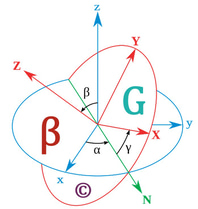Key Differences Between LV, MV, and HV Electrical Systems
Electrical systems are classified into different voltage levels to ensure efficient transmission, distribution, and utilization of electrical power. These classifications—Low Voltage (LV), Medium Voltage (MV), and High Voltage (HV)—each serve distinct purposes in power systems. Understanding their key differences is crucial for engineers, electricians, and facility managers working with electrical infrastructure.
POWER SYSTEMS
Engr. Benjamin V. Gonzales Jr.
2/4/20252 min read
Key Differences Between LV, MV, and HV Electrical Systems
Electrical systems are classified into different voltage levels to ensure efficient transmission, distribution, and utilization of electrical power. These classifications—Low Voltage (LV), Medium Voltage (MV), and High Voltage (HV)—each serve distinct purposes in power systems. Understanding their key differences is crucial for engineers, electricians, and facility managers working with electrical infrastructure.
1. Voltage Range Classification
The voltage classifications for LV, MV, and HV vary slightly depending on the governing standards (IEC, IEEE, NEC, etc.). However, the commonly accepted voltage ranges are:
Low Voltage (LV): Up to 1 kV (Typically 230V, 400V, or 480V)
Medium Voltage (MV): 1 kV to 36 kV
High Voltage (HV): Above 36 kV
Each category serves different roles in electrical networks, from end-user applications to bulk power transmission.
2. Application and Usage
LV Systems: Found in residential, commercial, and industrial facilities, LV systems power household appliances, office equipment, and machinery. These systems are easy to install and maintain but require higher current to deliver the same power as higher voltage systems, leading to greater energy losses over long distances.
MV Systems: Used in industrial plants, large commercial buildings, and substations. MV systems are common in power distribution networks, supplying factories, data centers, and medium-sized industrial processes.
HV Systems: Primarily used for power transmission over long distances. HV lines reduce energy loss during transmission by minimizing current flow, making them essential for transporting electricity from power plants to substations before distribution.
3. Insulation and Safety Considerations
LV Systems: Lower voltage levels make LV systems less hazardous but still capable of causing electrical shocks. Safety measures include circuit breakers, fuses, and grounding.
MV Systems: Require specialized insulation materials, arc flash protection, and protective relays due to increased electrical hazards.
HV Systems: Demand extensive insulation, clearance distances, and strict maintenance protocols to prevent electrical discharges and system failures. Workers must follow strict safety procedures, including personal protective equipment (PPE) and specialized training.
4. Equipment and Installation
LV Equipment: Includes circuit breakers, distribution boards, transformers, and switchgear, all of which are relatively compact and easier to maintain.
MV Equipment: Comprises larger switchgear, transformers, and cables designed for higher insulation levels. MV switchgear often features vacuum or SF6 circuit breakers to handle higher fault currents.
HV Equipment: Consists of large transformers, high-capacity circuit breakers, overhead transmission lines, and gas-insulated switchgear (GIS). HV equipment is designed for high durability and minimal power loss.
5. Cost and Maintenance
LV Systems: Low installation and maintenance costs, but higher energy losses over long distances.
MV Systems: Moderate cost with more complex maintenance due to specialized components and insulation requirements.
HV Systems: High initial cost and maintenance expenses, requiring dedicated teams for monitoring and servicing. However, they provide efficient long-distance power transmission with minimal losses.
Conclusion
Understanding the differences between LV, MV, and HV electrical systems helps in designing, operating, and maintaining power networks efficiently. Each voltage category plays a critical role in ensuring reliable electricity distribution, whether for residential use, industrial operations, or national power grids.
For electrical engineers and facility managers, selecting the appropriate voltage level depends on factors such as load requirements, distance, cost, and safety considerations. By leveraging the right electrical system, we can optimize performance, enhance safety, and reduce energy losses in various applications.





